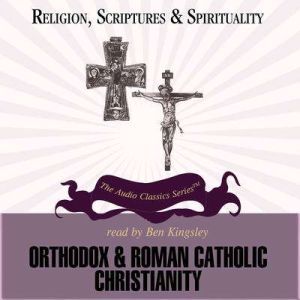
1 Rating(s)
List: $11.95
| Sale: $8.36
Club: $5.97
Orthodox and Roman Catholic Christianity
Author: Dr. Jean Porter
Narrator: Ben Kingsley
Unabridged: 2 hr 51 min
Format: Digital Audiobook Download
Publisher: Knowledge Products, Inc.
Published: 02/16/2006
Category: Religion
Synopsis
Christianity arose within the social and spiritual dislocation of the Roman Empire. Jesus, perceived by authorities as a threat to public stability, was executed in about 30 CE; his crucifixion and belief in his resurrection became a defining symbol for a worldwide Christian religion. The Christian New Testament was written from about 50150 CE; from 150 to 410, the church fathers defined Christian belief against the protests of various heretical movements. In 312, the future Roman emperor Constantine became a Christian; by 392 Christianity was the official religion of the Roman Empire. In 410, Rome fell and the divided Roman Empire led to the division of the Church. Communion between these churches was broken in 863; formal separation came with the Schism of 1054. Orthodox means true belief; Catholic means universal; each church claimed unrivaled legitimacy. The Orthodox Church is a loose federation of national churches, each under a patriarch; the Roman Catholic Church is a single, hierarchicallystructured church with the Pope at its head. Both churches have an episcopal structure (i.e. bishops), celebrate mass with the Last Supper, share virtually the same canon of scriptures, and affirm declarations of the early church councils. Roman Catholics reacted to Muslim conquests in the Middle East and Asia Minor by launching the Crusades (10951270); soon they turned against the Orthodox Church by sacking Constantinople in 1204. In the centuries after Constantinople fell again to Muslims in 1453, the center of Orthodoxy moved north to Russia. The Roman Catholic Church also was torn apart by the Protestant Reformation, which began in 1517. The Council of Trent (154563) began the Counter Reformation. Many Christians have long dreamed of a unified church; Orthodox, Roman Catholic, and Protestant Christians in the 20th century have looked for ways to emphasize their common beliefs. The Second Vatican Council of 1962 has been especially influential in laying the foundation for more positive relationships among various Christian faiths and with nonChristians as well.